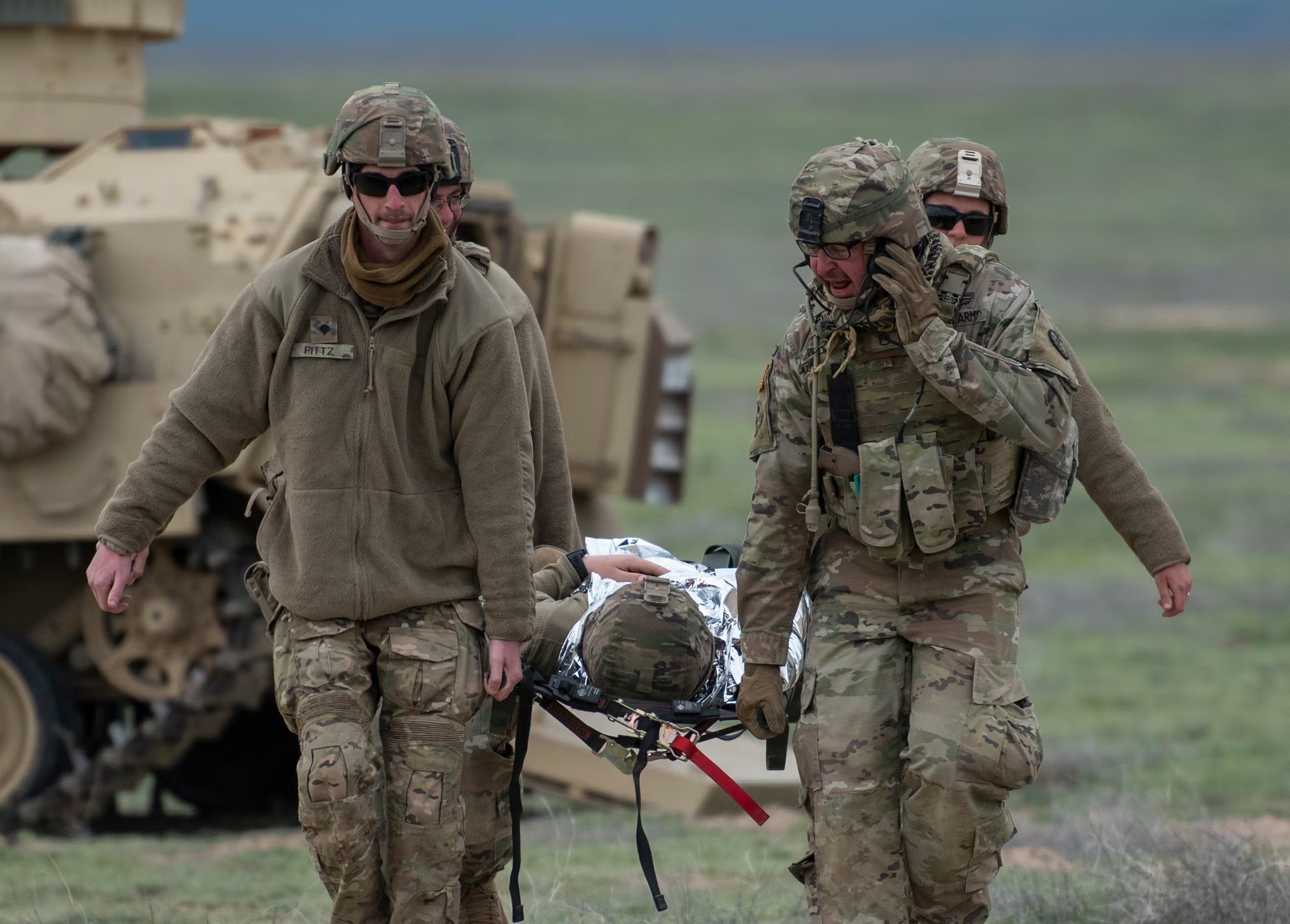Researchers are inching closer to creating medical tests to detect post-traumatic stress or mild traumatic brain injury — conditions that now are diagnosed only with self-reported symptoms and subjective exams.
Scientists from five institutions are one year into a five-year, $42.9 million study to find biomarkers that can indicate evidence of these injuries common to combat veterans.
Among the most promising findings, according to preliminary results presented Nov. 4 in a press conference at New York University Langone Medical Center, are brain imaging, blood and genetic variation tests, eye movements and even vocal changes evident in service members and civilians who have experienced a TBI or have been diagnosed with PTSD.
An estimated one in five of the 2.3 million troops who have served in combat since 2001 have suffered a brain injury and/or developed PTSD, according to researchers.
The scientists, supported by NYU Langone Medical Center and the Steven and Alexandra Cohen Veterans Center for the Study of PTS and TBI, are looking at the conditions in more than 4,000 troops and civilians, hoping to develop tests to detect these invisible wounds — and also help determine effective, individualized treatments.
"Our goal is to assemble all the relevant biomarkers and winnow them down to the best candidates for diagnosing," said Dr. Charles Marmar, chairman of the Psychiatry Department at NYU Langone Medical Center.
Using brain imaging, Dr. Amit Etkin, assistant professor of psychiatry and behavioral sciences at Stanford University, has found that compared to individuals without post-traumatic stress, patients with that condition have above-average activity in the portion of the brain responsible for creating and storing memories, the amygdala, and below-average activity in the portion that congtrols social behavior and expression, the medial prefrontal cortex, as a response to fear-inducing stimulus.
The findings could lead to brain scan tests to diagnose the condition and confirm treatments appropriate for the individuals, such as psychotherapy, medication, brain stimulation or a combination of those, Etkin said.
Meanwhile, at Emory University School of Medicine, Dr. Kerry Ressler is examining the role of genetics in resilience and developing post-traumatic stress.
Ressler has found gene variants in 10 percent to 20 percent of the population that increase the risk for developing PTSD. When he compared the genetic makeup of a group of predominantly male Iraq and Afghanistan combat veterans with PTSD to a group of black women who had been abused as children and also had PTSD, he found both groups shared the same gene anomaly.
Such evidence could lead to genetic tests to determine who may be at higher risk for developing PTSD, and designing pharmacological or psychological interventions, such as the administration of morphine or exposure therapy — both of which have been proven to prevent development of PTSD — following a traumatic event.
Other research in the study indicates that people with PTSD have distinct vocal patterns, which may allow measurement to determine whether a person has the disorder.
And at the Cohen Veterans Center, Dr. Uzma Samadani, who also serves as chief of neurosurgery at the Veterans Affairs New York Harbor Heath Care System, is studying an age-old symptom of head injury — out-of-sync eye movements — to develop a quick test for concussion.
Standing in front of a slide showing Wile E. Coyote after the Roadrunner has clocked him, Samadani noted how cartoonists indicated the character's head injury, with his eyes moving in circles, not in tandem. In scientific terms, the condition is called an "anisocoric and disconjugate gaze."
Samandani tracked the eye movements of more than 400 troops and veterans as they watched a four-minute video and found that in patients with a concussion or those recovering from a mild head injury, their eyes did not track together.
Her work could lead to the development of a medical device that could be used in combat theaters to detect a a concussion after it occurs.
"If someone has weakness or swelling, you can figure it out with eye tracking," she said. "You can't cheat on this test."
Much of the research for the massive study is being conducted in New York and at Stanford with 1,500 participants, and with 2,500 personnel at Fort Campbell, Kentucky.
The physicians said the next phase will involve determining the most promising biomarkers and how they can be used to personalize treatments for PTSD and TBI.
According to researchers, what works for some patients don't work in others, and scientists aren't exactly sure why. For example, psychotherapy works to alleviate PTSD symptoms in 98 percent of females who have rape-related PTSD, but is successful only for about half of veterans with combat-related PTSD.
"Nine months from now, we'll embark on a personalized medicine trial where we take the best of these and use them to try to understand who does or does not respond to these therapies, whether it be psychotherapy, medical therapy or brain stimulation therapy," Marmar said.
Patricia Kime is a senior writer covering military and veterans health care, medicine and personnel issues.





